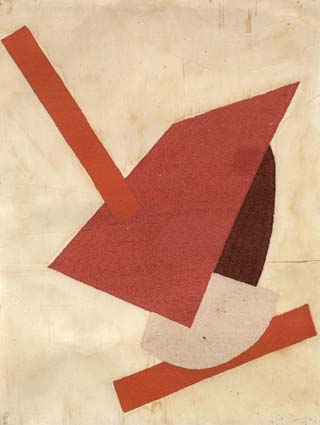<Back to Index>
- Painter, Designer and Architect Vadym Georgyevich Meller, 1884
- Painter, Designer and Scenographer Nina Genke - Meller, 1893
PAGE SPONSOR
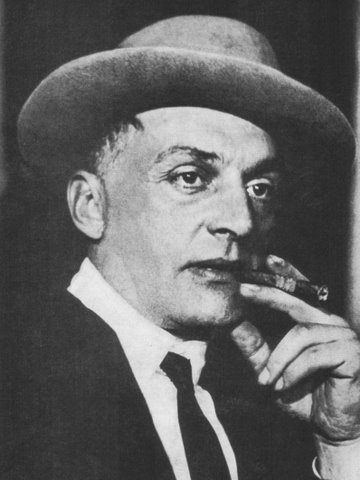
Vadym Meller or Vadim Meller, (Russian: Вадим Георгиевич Меллер, 1884 – 1962) was a Ukrainian - Russian Soviet painter, avant garde Cubist and Constructivist artist, theatrical designer, book illustrator and architect. In 1925, he was the first artist to be awarded a gold medal in the Exposition Internationale des Arts Décoratifs et Industriels Modernes (Art Deco) in Paris.
Vadim Meller was born in Saint Petersburg. He was the second son of a top official in the Ministry of Justice in the Russian Empire. His father, George Meller, was a noble born Swede; his mother, Helena Caruso, was half Italian and half Greek, and also from a noble family.
From 1903 – 1908, he was a student at Kiev University. In 1905, V. Meller visited Geneva, Switzerland, where he took art lessons at the private school of Franz Roubaud. In 1908, with the recommendation of Roubaud, he continued his education at the private art school of drawing and painting of Heinrich Knirr in Munich, Germany. There, Meller met another student, Paul Klee, who introduced him to Der Blaue Reiter group.
After graduating from the Kiev University with a degree in law, he acquired an artistic education in the Munich Academy of Fine Arts from 1908 – 1912. V. Meller stayed in close contact with Der Blaue Reiter group. During this time, he also met Wassily Kandinsky, with whom he became friends.
V. Meller started to exhibit his works after moving to Paris, where he joined the Société des Artistes Indépendants. At the same time Vadim Meller was a student of Antoine Bourdelle. During 1912 – 1914, together with Kazimir Malevich, Sonia Delaunay, Alexander Archipenko and Aleksandra Ekster, he participated in a number of exhibitions (Salon des Indépendants, Spring Salon and Salon D' Automne) alongside Pablo Picasso, Georges Braque and André Derain.
After returning to Kiev in 1915, he worked at easel and monumental painting, graphic design and costume design. His transition to scenography as his main field of artistic activity took place in the post revolutionary years. From 1918 – 1921, he worked with scenographer and dancer Bronislava Nijinska (Vaslav Nijinsky's sister) in her ballet studio.
In 1922, Les Kurbas invited V. Meller to the recently founded Berezil' theater.
In 1925, V. Meller, together with Sonia Terk, Alexandra Ekster and Nathan Altman, participated in Exposition Internationale des Modernes (Art Deco) in Paris. There, Meller was awarded a gold medal for his scenic design of the Berezil' theater. That same year, V. Meller participated in the International Theater Exposition in New York.
V. Meller became the leader of the Constructivism movement in Ukrainian theater design. He worked in the National theater as a chief artist until 1945. From 1925 onward he also taught at the Kiev Art Academy (KKHI) together with Vladimir Tatlin and Alexander Bogomazov. Also in 1925, V. Meller became a member of the artists union Association of the Revolutionary Masters of Ukraine together with David Burliuk (co-founder), Alexander Bogomazov (co-founder), Vasiliy Yermilov, Victor Palmov and Khvostenko - Khvostov.
In 1928 Vadim Meller participated in the International Press Exhibition Pressa Cologne, together with El Lissitzky, Aleksandr Tyshler and Vasiliy Yermilov.
In 1929, together with Jozeph Shpinel, V. Meller worked as an art director for the movie Arsenal, which was directed by Alexander Dovzhenko.
V. Meller worked as an acting director of the Monumental Painting and Sculpture Institute of the Academy of Architecture of the Ukrainian SSR (1946 – 1948), a chief artist of the Kiev Music Comedy Theater (1948 – 1953), and a chief artist of the Iv. Franko Kiev Academic Theater (1953 – 1959).
He was married to Nina Genke.
Vadim Meller died in Kiev.
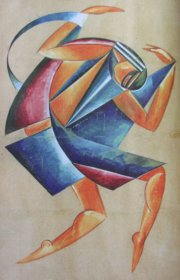
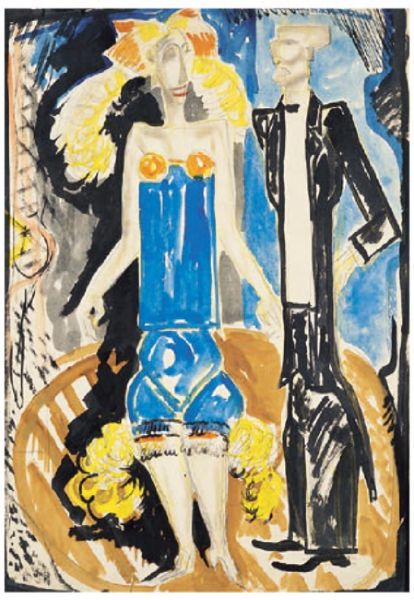
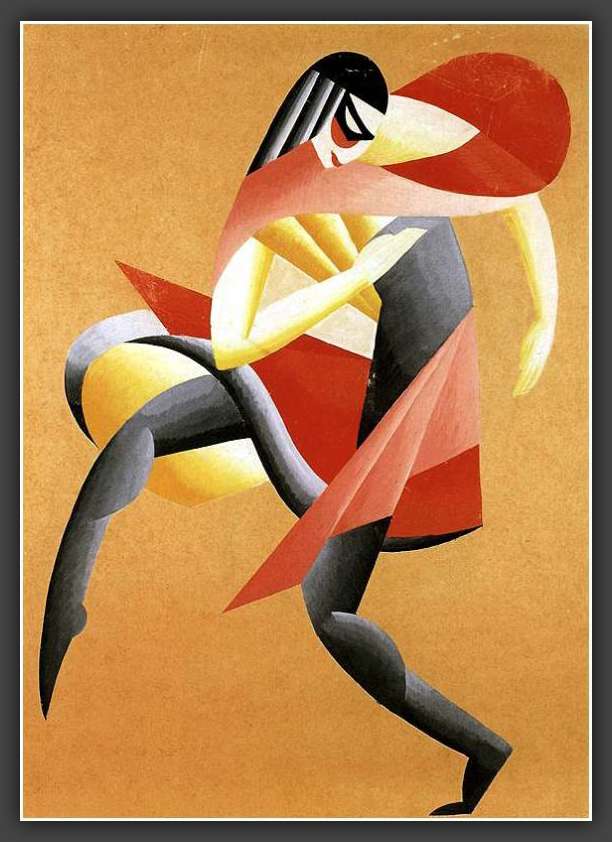
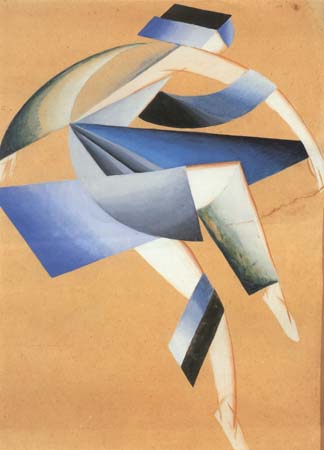
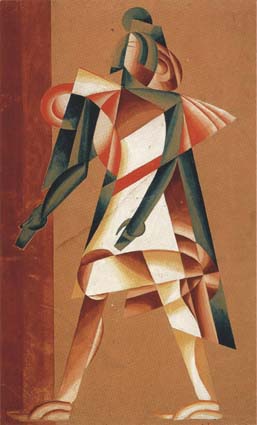
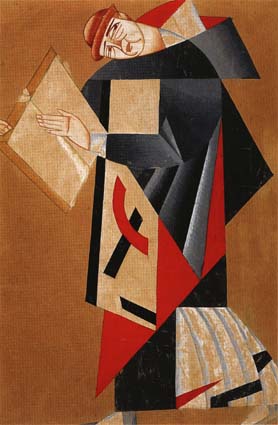
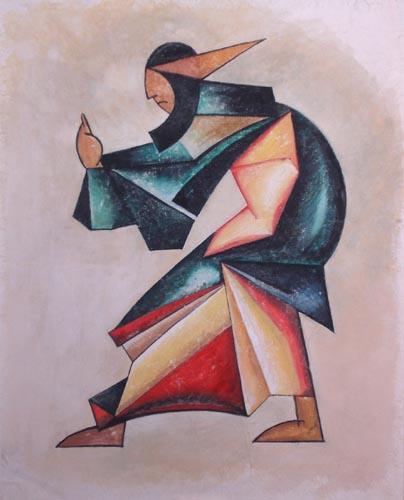
Nina Genke or Nina Genke - Meller, or Nina Henke - Meller, (Russian: Нина Генке-Меллер, Нина Генке, 1893 – 1954) was a Ukrainian - Russian avant garde artist (Suprematist), designer, graphic artist and scenographer.
Nina Genke was born in Moscow. Her father Genrikh Genke was Dutch and her mother Nadezhda Tikhanova was Russian.
In 1912 she graduated from Levandovskaya Private Gymnasium in Kiev. She received a diploma to teach Russian language and history.
In 1913 she started to teach history, geography and drawing in the Higher Primary College for Women in Skoptsi. It was at Skoptsi where her inspiration to art sprang to life. There Nina Genke met an artist Yevgenia Pribylska, who was a head of the Art Studio in a Folk Center.
In 1914 she began attending Aleksandra Ekster’s studio in Kiev for her art education. From 1915 to 1917 she was an assistant in Ekster's studio. At the same time Nina Genke worked as an artist in Skoptsi (Skoptsy) Village Folk Center with supervisor Yevgeniya Pribilskaya and in the Verbovka Village Folk Center, founded by N. Davidova.
She was closely connected with the Supremus group that was led by Kazimir Malevich, the founder of Suprematism.
After 1915, Nina Genke worked as a head and a chief artist of the Verbovka Village Folk Center (province in Kiev). She attracted famous avant garde artists such as Kazimir Malevich, Nadezhda Udaltsova, Aleksandra Ekster, Ivan Kliun, Ivan Puni, Lyubov Popova, Olga Rozanova, Ksenia Boguslavskaya and others to the creative peasant artisans co-operative.
In the period after the October Revolution of 1917, she participated in decorating the streets of Kiev and Odessa for Revolution Festivities together with Aleksandra Ekster and Kliment Red'ko, involved herself in designing grandiose shows, as well as a book graphic design.
Nina Genke was a chief artist of the Golfstream futuristic publishing house led by Ukrainian poet - Futurist, Mykhail Semenko. At the same time she was working as a graphic artist.
During the period 1920 - 1924 she taught art in the All Ukrainian State Center Studio.
In 1924, she moved to Moscow, working as a stage designer, designer for china (mostly plates) and wallpaper manufacture.
Nina Genke also held a position of the Deputy Head of the Board on Fine Arts in Vserabis.
Later Nina Genke worked as an interior designer, a scenographer, a supervisor of decorative and applied arts institutions, etc.
She was married to Vadim Meller.
Nina Genke - Meller died in Kiev.
